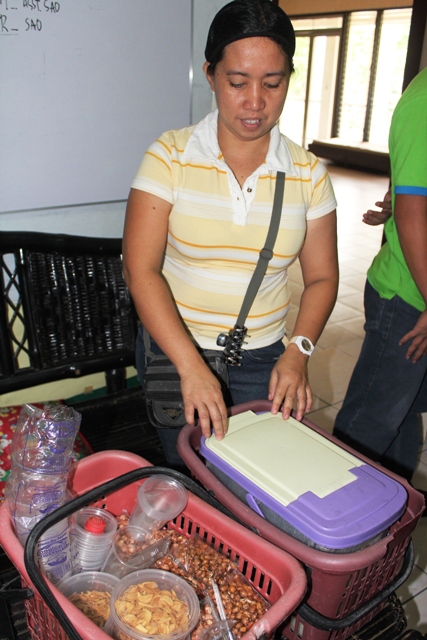![]()
Specialty food chevon (goat meat), valued for its low cholesterol and lean fat, will be marketed before yearend by the Batangas State University (BatStateU) as processed "lemongrass-enhanced" tapa and sausage and is seen to generate livelihood in Lobo, Batangas.
Recognized to be clean for its vegetarian feed despite having been formerly known as a poor man's cow, goat's meat is nearly ready to be in the market.
This is after a successful consumer preference testing, according to BatStateU Faculty-Researcher Rowena Odono Anyayahan.
“Our consumers are getting to be health-conscious. We receive many interests in goat meat because of its nutritional value. It’s more organic because 70 percent of its feed is from grass. Our aim is to make it 100 percent commercial feed-free, said Anyayahan.
"Lemongrass, our enhancer, also has many therapeutic effects and also eliminates the unwanted taste in chevon."
![chevon tapa]()
Aside from lemongrass flavoring, garlic, which is an equally nutrient-rich as lemongrass, will be another variant to be introduced in one-fourth kilo packs.
The Department of Agriculture-Bureau of Agricultural Research (DA-BAR) funded a P1.5 million goat breeding program in Batangas that is jumpstarting commercialization of processed chevon.
The program, which started in 2009, has improved goat breeds by crossing native goats with high meat-yielding Boer and high dairy-yielding Anglo Nubian foreign breeds.
“We want to promote industries for small-hold farmers because they are the ones that need government assistance the most. Goat meat is a good product for small farming entrepreneurs to start their business,” said BAR Director Nicomedes P. Eleazar.
It is estimated that 99.59 percent of total goat inventory in the country is in backyard farms, and only 0.41 percent is in commercial farms.
There are already 14 goat raiser-beneficiaries under the program. More goat raisers will be trained as the number of farmers is targeted at 25 by yearend.
The breeding program in Lagadlarin Experimental Farm, Lobo, Batangas already generated 11 well-bred goats.
BatStateU is beefing up goat inventory in order to stabilize source of meat when it starts producing the lemongrass and garlic-enhanced chevon.
The BatStateU project--co-funded internally with the support of Dr. Nora L. Magnaye, BatStateU president--owns 30 heads of native breeder does and five purebred buck.
It presently has 24 male kids and 15 female kids. Its breeder base generates the goats that are fattened until slaughtering weight of 40 to 45 kilos 18 months from birth. These F3 breeds have a doubled live weight compared to 20 kilos for native animals.
“Breeding of native does continues. Male kids will be maintained for breeding, and 75 percent of the breeder doe is productive and capable of mating,” said Anyayahan and fellow researcher Myrna A. Garcia in a report.
Farmers in Lobo can now avail of the breeding services given for free through the available buck owned by BatState U.
The upgraded goat generates 100 percent increase in earnings for farmers. Income is P5,000 per head compared to P1,500-P2,500 income from non-bred goats.
The Food Technology laboratory of BatStateU is now undertaking a nutritional content study for chevon preparatory to the market release.
A United States Department of Agriculture nutrient reference indicated that
chevon offers the lowest cholesterol content for every three-ounce cooked meat at 63.8 milligrams (mg) among meats. That of chicken is 76 mg; beef and pork, 73.1 mg each; and lamb, 78.2. Calories is at the lowest at 122 while chicken has 162; beef, 170; pork, 180; and lamb, 175.
Chevon’s protein content is comparable at 23 grams, while chicken, beef, and pork have a little higher 25 grams, and lamb, 24 grams.
A separate funding of P400,000 is being allocated by BatStateU for commercialization.
Dr. Erma B. Quinay, BatStateU vice president for research, said the state-run school seeks funding for a vacuum packing machine. That ensures food safety and longer shelf life for the product.
The flavored chevon is initially priced at P73 per pack (250g), generating sale of P365 per kilo. This gives 74 percent profit from P271 cost.
The products will be distributed to pasalubong centers, beach resorts, BatStateU campuses, and the provincial market at this early marketing stage. Later on, they will go to the national market.
“The project served as an eye-opener to those who want to establish goat farms in the locality. It served as the training grounds for agriculture students. Innovative chevon processing will be extended to the housewives as a livelihood project,” said Anyayahan.
Goat inventory in the Philippines is aimed to be raised considering the livelihood it can generate among small farmers and small meat processors. Production should also meet rising demand for this healthful meat.
From the 3.88 million heads in 2011 based on Bureau of Agricultural Statistics data, this should rise to 6.6 million heads by 2020.
The value of goat production in the country grew from P1.908 billion in 1992 to P4.535 billion in 2003.
Despite a low per capita consumption of 0.42 kilo per year, the country imports chevon which indicates there is a good market for the products.
To enhance animal production, the BAR-funded breeding program introduced a plantation of improved forage for goat and a commercial goat breeding and fattening farm system. It uses building-type housing that protect animal health.
Sanitation including animal maintenance through hoof trimming, vaccination, ear tagging, and record keeping are practiced.
After the two-year breeding program, one problem that BatStateU proposed to resolve is the low herbage production of grasses in summer. This may be solved through irrigation, integration of goat with jatropha in a plantation, and introduction of feeds as supplement.
A combination of leguminous forage and grasses are in its experimental plantation farm. These are ipil ipil, kakawate, acacia, sesbania, rensonii, indegofera, trichantera, napier grass, purple guinea grass, signal grass, flamegia, and native grasses.
Top producing regions for goat in the country are Central Visayas (486 T heads), Ilocos (456.8 T head), Western Visayas (353.9 T heads), Southern Mindanao (321.6 T heads) and Southern Tagalog (254.8 T heads ) accounting for about 56.6 % of the total goat population.
For any questions, please contact Ms. Rowena Odono Anyayahan, Batangas State University faculty-researcher, 0927-748-6432, or for interview requests, 0917-979-1629.
Bureau AgriResearch. (2012). Specialty food lemongrass-enhanced chevon tapa and chevon sausage to be marketed by yearend by Batangas State University [Press release].

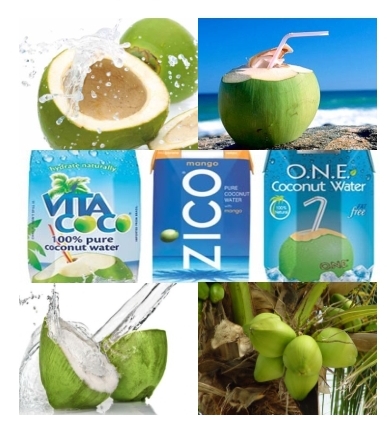 PRODUCTION PROCESS
The following are the basic steps in processing coconut water.
1. Select young coconut with no cracks, holes, or other defects.
2. Wash the nuts with tap water and later sanitize with chlorinated water (1 tsp com- mercial chlorine bleach per liter of water).
3. Cut nuts and collect coconut water in clean containers.
4. Scoop meat with spoon and wash with po- table water to remove fibers, testa and other dirt particles.
5. Mix buko meat and coconut water. (optional).
6. Add 20% potable water to the mixture and sweeten with sugar according to taste.
7. Pour in Polyethylene Terephthalate (PET) bottles and seal.
8. Store in coolers or refrigerate. This will last for 14 days or more at 4 oC.
Note: Work place and materials to be used should be under hygienic conditions to avoid contamination and exposure to foreign objects.
OTHER PROCESSING TECHNIQUES
To prolong the shelf-life of coconut water, vari- ous preservation techniques are recommended such as Ultra High Temperature, Cold Preserva- tion and Microfiltration.
Ultra High Temperature (UHT) involves heating the water to 130 oC to 150 oC for 2-45 seconds; the product is aseptically packaged in order to obtain a stable shelf -life (1 to 2 years at ambient temperatures); however, the flavour is changed due to high heat; UHT is only used for export purposes.. The maximum capacity for the UHT equipment is 2,500 liters/hour.
Microfiltration is a type of physical filtration process where a contaminated fluid is passed through a special pore-sized membrane to separate microorganisms and suspended particles from the liquid; used in ultra filtra- tion and reverse osmosis to provide a prod- uct stream which is free of undesired con- taminants.
Cold Preservation is the process that involves filtration, bottling and temperature control allowing the bottled coconut water to stay fresh from 10 days to 3 weeks and retains natural flavour.
PRODUCTION PROCESS
The following are the basic steps in processing coconut water.
1. Select young coconut with no cracks, holes, or other defects.
2. Wash the nuts with tap water and later sanitize with chlorinated water (1 tsp com- mercial chlorine bleach per liter of water).
3. Cut nuts and collect coconut water in clean containers.
4. Scoop meat with spoon and wash with po- table water to remove fibers, testa and other dirt particles.
5. Mix buko meat and coconut water. (optional).
6. Add 20% potable water to the mixture and sweeten with sugar according to taste.
7. Pour in Polyethylene Terephthalate (PET) bottles and seal.
8. Store in coolers or refrigerate. This will last for 14 days or more at 4 oC.
Note: Work place and materials to be used should be under hygienic conditions to avoid contamination and exposure to foreign objects.
OTHER PROCESSING TECHNIQUES
To prolong the shelf-life of coconut water, vari- ous preservation techniques are recommended such as Ultra High Temperature, Cold Preserva- tion and Microfiltration.
Ultra High Temperature (UHT) involves heating the water to 130 oC to 150 oC for 2-45 seconds; the product is aseptically packaged in order to obtain a stable shelf -life (1 to 2 years at ambient temperatures); however, the flavour is changed due to high heat; UHT is only used for export purposes.. The maximum capacity for the UHT equipment is 2,500 liters/hour.
Microfiltration is a type of physical filtration process where a contaminated fluid is passed through a special pore-sized membrane to separate microorganisms and suspended particles from the liquid; used in ultra filtra- tion and reverse osmosis to provide a prod- uct stream which is free of undesired con- taminants.
Cold Preservation is the process that involves filtration, bottling and temperature control allowing the bottled coconut water to stay fresh from 10 days to 3 weeks and retains natural flavour.
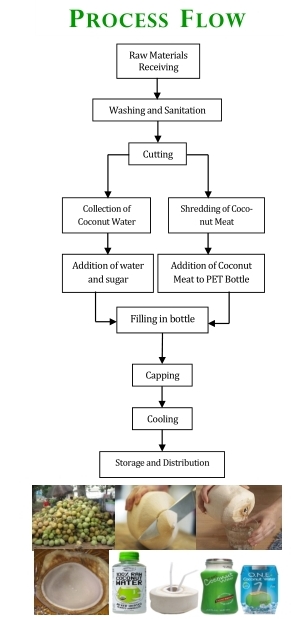 USES AND HEALTH BENEFITS
Coconut water can used as a high-electrolyte beverage with a low glycemic index (54 ± 4) for hydration purposes. (Based on the study conducted by PCA on the Development of a High Electrolyte, Low Glycemic Index Coco Water Drink in 2011).
During the World War II, coconut water has been used intravenously since coconut water is identical to the human plasma and can be injected directly into the human bloodstream.
Decrease the risk of heart attacks, increase metabolic rate, help in dissolving kidney stones, prevents muscle cramps, and an effective diuretic are some of the health benefits of coconut water.
FOOD PRODUCT DEVELOPMENT DIVISION
Research and Development Branch
Philippine Coconut Authority
FPDD Plant, PCA Cmpd., Elliptical Road Diliman, Quezon City
Tel. No.: (+632) 928-4501
Fax No.: (+632) 926-7631
Email: fpdd.pca@gmail.com
USES AND HEALTH BENEFITS
Coconut water can used as a high-electrolyte beverage with a low glycemic index (54 ± 4) for hydration purposes. (Based on the study conducted by PCA on the Development of a High Electrolyte, Low Glycemic Index Coco Water Drink in 2011).
During the World War II, coconut water has been used intravenously since coconut water is identical to the human plasma and can be injected directly into the human bloodstream.
Decrease the risk of heart attacks, increase metabolic rate, help in dissolving kidney stones, prevents muscle cramps, and an effective diuretic are some of the health benefits of coconut water.
FOOD PRODUCT DEVELOPMENT DIVISION
Research and Development Branch
Philippine Coconut Authority
FPDD Plant, PCA Cmpd., Elliptical Road Diliman, Quezon City
Tel. No.: (+632) 928-4501
Fax No.: (+632) 926-7631
Email: fpdd.pca@gmail.com

 Photo by
Photo by 
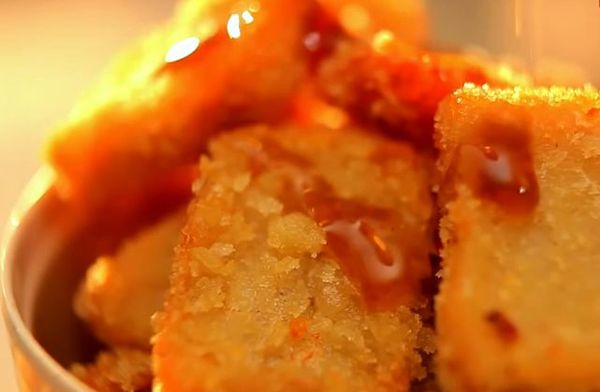

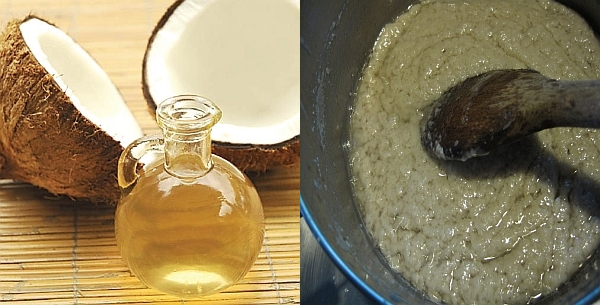 Procedure:
1. Weigh the grated coconut and press by the hands in a cheesecloth to extract the cream. Set aside.
2. To the second extraction, add 1 liter of water for every kilo of grated coconut.
3. Repeat extraction, reducing the water added to 1/2 as previously added.
4. Combine the second, third extractions, strain through a cheesecloth, measure and set aside.
5. Prepare the saturated
Procedure:
1. Weigh the grated coconut and press by the hands in a cheesecloth to extract the cream. Set aside.
2. To the second extraction, add 1 liter of water for every kilo of grated coconut.
3. Repeat extraction, reducing the water added to 1/2 as previously added.
4. Combine the second, third extractions, strain through a cheesecloth, measure and set aside.
5. Prepare the saturated 
 Photo by
Photo by 
 Photo by
Photo by 
 Photo by
Photo by  II. Procedure
1. Peel under-ripe green bananas and evenly slice crosswise into 5 mm. - 8 mm. thick. Saba, latundan or lakatan varieties may be used as raw material.
2. Immediately soak the sliced bananas (chips) into citric acid solution (made by mixing 1 part lemon juice with 2-3 parts water) for 3-5 minutes to prevent them from turning brown. Note: Solution can be used twice.
3. Drain chips from the solution using plastic sieve.
4. Dip the drained chips in syrup solution (done by mixing 1 cup of sugar with 3 cups of boiling water and adding 1 cup of honey) for 3-5 minutes.
5. Drain the chips from syrup solution and place them in drying tray.
6. Let the chips dry under the sun for 2 days until texture becomes rubbery soft.
7. Heat vegetable oil in the frying pan to 180oC – 200ºC degrees Celsius and dip the chips until they turn golden brown.
8. Drain the oil from the chips and allow to cool to room temperature.
9. Place the chips in moisture-proof polyethylene bags, label, and seal the bags. Place them in a cool place away from direct sunlight.
10. Banana chips are now ready for market.
Source: http:practicalaction.org, http:howtopedia.org
III. Estimated Costing and Pricing
A. Product Costing
1) Direct Cost
II. Procedure
1. Peel under-ripe green bananas and evenly slice crosswise into 5 mm. - 8 mm. thick. Saba, latundan or lakatan varieties may be used as raw material.
2. Immediately soak the sliced bananas (chips) into citric acid solution (made by mixing 1 part lemon juice with 2-3 parts water) for 3-5 minutes to prevent them from turning brown. Note: Solution can be used twice.
3. Drain chips from the solution using plastic sieve.
4. Dip the drained chips in syrup solution (done by mixing 1 cup of sugar with 3 cups of boiling water and adding 1 cup of honey) for 3-5 minutes.
5. Drain the chips from syrup solution and place them in drying tray.
6. Let the chips dry under the sun for 2 days until texture becomes rubbery soft.
7. Heat vegetable oil in the frying pan to 180oC – 200ºC degrees Celsius and dip the chips until they turn golden brown.
8. Drain the oil from the chips and allow to cool to room temperature.
9. Place the chips in moisture-proof polyethylene bags, label, and seal the bags. Place them in a cool place away from direct sunlight.
10. Banana chips are now ready for market.
Source: http:practicalaction.org, http:howtopedia.org
III. Estimated Costing and Pricing
A. Product Costing
1) Direct Cost


 IV. Business Registration Requirements
1. Business Name Certification
Department of Trade & Industry (DTI) within NCR
a. 12/F Trafalgar Plaza, 105 H.V. Dela Costa St., Salcedo Village, Makati City
Tel. No.: 811.8232 loc. 208
b. 2/F Park N’Ride, Lawton, P. Burgos Ave., Dr. Basa St. Ermita, Manila
Tel. No.: 536.7153
c. G/F Highway 54 Plaza, EDSA Mandaluyong City (across SM Megamall)
Tel. No.: 706.1767
d. 5/F Araneta Square Mall Monumento Circle, Caloocan City
Tel. No.: 332-0854 / 332-0829
DTI Provincial Office where the business is located or log on to www.bnrs.dti.gov.ph for online registration
Validity: 5 years
2. Mayor’s Permit/Residence Certificate
Municipal or City Office where the business is located
Validity: 1 year
3. Tax Identification Number (TIN)
Bureau of Internal Revenue (BIR)
National Office, Agham Road, Diliman, Quezon City
Tel. Nos.: 929.7676 / 927.2511
Email: contact_us@cctr.bir.gov.ph
www.bir.gov.ph
4. Bureau of Food and Drugs (BFAD)
Filinvest Corporate Center, Alabang, Muntinlupa City
Tel. No. 842.5606
Fax No. 807.0751
Email: bfad@bfad.gov.ph
www.bfad.gov.ph
V. Funding Sources
People’s Credit and Finance Corporation (PCFC)
2/F Accelerando Building
395 Sen. Gil Puyat Avenue, Makati City
Tel. Nos. 897.8521 / 752.3745
Fax Nos. 896.1610 / 325.0449
Email: info@pcfc.ph
VI. Technical Assistance
Department of Science and Technology (DOST)
General Santos Avenue, Bicutan, Taguig City
Tel. Nos.: 837.2071 to 82
Fax No.: 837.8937
Email: efa@dost.gov.ph
www.dost.gov.ph
Technology Resource Center (TRC)
TRC Building, 103 J. Abad Santos corner Lopez Jaena
Sts., Little Baguio, San Juan City
Tel. No.: 727.6205 loc. 208 / 209
www.trc.dost.gov.ph
Source: BUREAU OF MICRO, SMALL AND MEDIUM ENTERPRISE DEVELOPMENT (BMSMED)
5/F, Trade and Industry Building
361 Sen. Gil J. Puyat Ave. Makati City
Tel. Nos.: (02) 897.1693 / 897.7596 / 890.4968
Fax No.: (02) 896.7916 Email: bmsmed@dti.gov.ph
www.dti.gov.ph
IV. Business Registration Requirements
1. Business Name Certification
Department of Trade & Industry (DTI) within NCR
a. 12/F Trafalgar Plaza, 105 H.V. Dela Costa St., Salcedo Village, Makati City
Tel. No.: 811.8232 loc. 208
b. 2/F Park N’Ride, Lawton, P. Burgos Ave., Dr. Basa St. Ermita, Manila
Tel. No.: 536.7153
c. G/F Highway 54 Plaza, EDSA Mandaluyong City (across SM Megamall)
Tel. No.: 706.1767
d. 5/F Araneta Square Mall Monumento Circle, Caloocan City
Tel. No.: 332-0854 / 332-0829
DTI Provincial Office where the business is located or log on to www.bnrs.dti.gov.ph for online registration
Validity: 5 years
2. Mayor’s Permit/Residence Certificate
Municipal or City Office where the business is located
Validity: 1 year
3. Tax Identification Number (TIN)
Bureau of Internal Revenue (BIR)
National Office, Agham Road, Diliman, Quezon City
Tel. Nos.: 929.7676 / 927.2511
Email: contact_us@cctr.bir.gov.ph
www.bir.gov.ph
4. Bureau of Food and Drugs (BFAD)
Filinvest Corporate Center, Alabang, Muntinlupa City
Tel. No. 842.5606
Fax No. 807.0751
Email: bfad@bfad.gov.ph
www.bfad.gov.ph
V. Funding Sources
People’s Credit and Finance Corporation (PCFC)
2/F Accelerando Building
395 Sen. Gil Puyat Avenue, Makati City
Tel. Nos. 897.8521 / 752.3745
Fax Nos. 896.1610 / 325.0449
Email: info@pcfc.ph
VI. Technical Assistance
Department of Science and Technology (DOST)
General Santos Avenue, Bicutan, Taguig City
Tel. Nos.: 837.2071 to 82
Fax No.: 837.8937
Email: efa@dost.gov.ph
www.dost.gov.ph
Technology Resource Center (TRC)
TRC Building, 103 J. Abad Santos corner Lopez Jaena
Sts., Little Baguio, San Juan City
Tel. No.: 727.6205 loc. 208 / 209
www.trc.dost.gov.ph
Source: BUREAU OF MICRO, SMALL AND MEDIUM ENTERPRISE DEVELOPMENT (BMSMED)
5/F, Trade and Industry Building
361 Sen. Gil J. Puyat Ave. Makati City
Tel. Nos.: (02) 897.1693 / 897.7596 / 890.4968
Fax No.: (02) 896.7916 Email: bmsmed@dti.gov.ph
www.dti.gov.ph

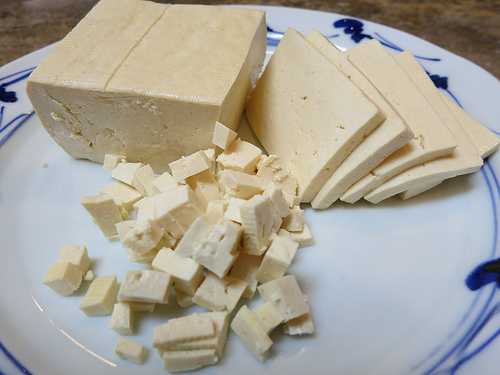 Photo by
Photo by 
 Image: kusinanimanang.blogspot.com[/caption]
Bottled Bangus in Corn Oil
(Adapted from Gamboa, 2000 and BFAR-7, 2001)
Ingredients (per 8 oz bottle)
Bangus
Corn oil (To fill)
Carrots 2 slices
Pickles 2 slices
Peppercorn 3 pcs.
Chili pepper (Siling labuyo) 1 pc.
Iodized salt 1/2 tsp.
MSG (pinch)
Bay leaf 1 pc.
Procedure:
1. Remove the head, fins, tail, belly flaps and internal organs.
2. Cut the fish transversely to fit the size of the bottle.
3. Wash the fish thoroughly to remove all traces of blood
4. Partially dehydrate and pre-process fish by either of two ways:
a. Dry for 2 hours under the sun or until firm and deep fry in oil for 2 minutes (Gamboa, 2000)
b. Soak in 10% brine solution (1 part salt to 9 parts of water) for 15-25 minutes depending on the size of the fish (BFAR-7, 2001)
5. Place the fish inside the bottles and add the rest of ingredients.
6. Fill with corn oil, leaving ¼ inch space from top of bottle.
7. Lightly cap bottles and exhaust by putting in a hot water bath or by steaming for 15 to 20 minutes.
8. Cap bottles tightly while still hot and check for leakage by inverting each bottle.
9. Arrange in pressure cooker and process for 100 minutes at 10 psi.
10. Allow pressure to drop. Remove the jars, allow to cool and wash with soap and water.
11. Dry bottles, apply label and plastic cap sealer.
12. Store for at least one month to attain desired flavor before distributing
Source: (Wilfredo G. Yap, Antonio C. Villaluz, Ma. Gracia G. Soriano, and Mary Nia Santos) Milkfish Production and Processing Technologies in the Philippines
Image: kusinanimanang.blogspot.com[/caption]
Bottled Bangus in Corn Oil
(Adapted from Gamboa, 2000 and BFAR-7, 2001)
Ingredients (per 8 oz bottle)
Bangus
Corn oil (To fill)
Carrots 2 slices
Pickles 2 slices
Peppercorn 3 pcs.
Chili pepper (Siling labuyo) 1 pc.
Iodized salt 1/2 tsp.
MSG (pinch)
Bay leaf 1 pc.
Procedure:
1. Remove the head, fins, tail, belly flaps and internal organs.
2. Cut the fish transversely to fit the size of the bottle.
3. Wash the fish thoroughly to remove all traces of blood
4. Partially dehydrate and pre-process fish by either of two ways:
a. Dry for 2 hours under the sun or until firm and deep fry in oil for 2 minutes (Gamboa, 2000)
b. Soak in 10% brine solution (1 part salt to 9 parts of water) for 15-25 minutes depending on the size of the fish (BFAR-7, 2001)
5. Place the fish inside the bottles and add the rest of ingredients.
6. Fill with corn oil, leaving ¼ inch space from top of bottle.
7. Lightly cap bottles and exhaust by putting in a hot water bath or by steaming for 15 to 20 minutes.
8. Cap bottles tightly while still hot and check for leakage by inverting each bottle.
9. Arrange in pressure cooker and process for 100 minutes at 10 psi.
10. Allow pressure to drop. Remove the jars, allow to cool and wash with soap and water.
11. Dry bottles, apply label and plastic cap sealer.
12. Store for at least one month to attain desired flavor before distributing
Source: (Wilfredo G. Yap, Antonio C. Villaluz, Ma. Gracia G. Soriano, and Mary Nia Santos) Milkfish Production and Processing Technologies in the Philippines

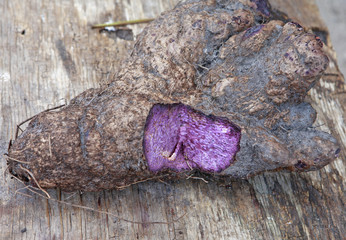

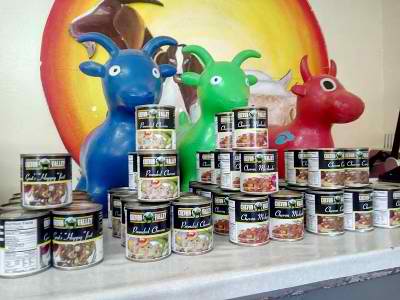 Now under its trade name, Chevon Valley, ISU-CVSRRC developed various products from chevon: canned and ready-to-eat. Among the canned chevon products include Goat’s Happy Feet, Chevon Curry, Chevon Mechado, Chili-garlic Chevon, and Pounded Chevon with filings; while the ready-to-eat products include chevon meat balls and classic dip, chevon with white sausage toppings, and chevon ribs with chestnut sauce.
“Canning was conducted to preserve the food from one year or more. By doing so, chevon products can reach market outside the country, such as Middle East wherein demand for goat is high,” said Dr. Jonathan N. Nayga, director of CVSRRC who also serves as the project leader.
Now under its trade name, Chevon Valley, ISU-CVSRRC developed various products from chevon: canned and ready-to-eat. Among the canned chevon products include Goat’s Happy Feet, Chevon Curry, Chevon Mechado, Chili-garlic Chevon, and Pounded Chevon with filings; while the ready-to-eat products include chevon meat balls and classic dip, chevon with white sausage toppings, and chevon ribs with chestnut sauce.
“Canning was conducted to preserve the food from one year or more. By doing so, chevon products can reach market outside the country, such as Middle East wherein demand for goat is high,” said Dr. Jonathan N. Nayga, director of CVSRRC who also serves as the project leader.
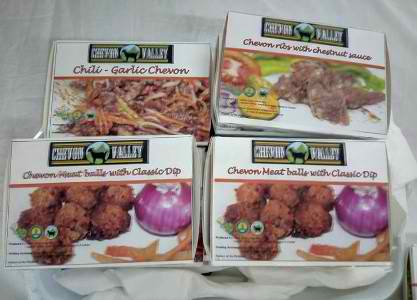 He shared that goat meat production is regarded as the principal function of goat raising among developing countries. In the Philippines, the province of Isabela as dominated by Ilokanos are known to be “goat-eating” people. And as a common practice in the past to sell goat on a per head basis, Filipinos are now introduced with the healthier option of consuming chevon among the usual red meats available in local markets such as pork and beef, and even chicken meat.
Chevon can be consumed fresh, chilled, or frozen. It has lower amount of saturated fats and has high levels of unsaturated fats as compared to other meats. Saturated fats increase the risk of acquiring cardiovascular diseases while unsaturated fats help improve blood cholesterol levels and lowering the risk having heart diseases. It has lower calories and cholesterol, and has high levels of iron and protein when compared to equal serving sizes of chicken, beef, and pork. Compared to other commercially-available canned meat, ISU’s products have no preservatives.
Seeing the potential to capture larger Filipino consumers, capturing the exquisite tastes of the local delicacies, especially those living in the urban areas and at the same time to help the goat raisers in the country, the Bureau of Agricultural Research (BAR) funded in 2014 the technology transfer of chevon product processing and commercialization of new chevon products under the National Technology Commercialization Program (NTCP).
Realizing the potential of this growing industry, Region 2 has implemented various R&D projects encompassing the whole production-to-processing cycle since 2006. Goat raising in particular is an ideal livelihood options for farmers in the rural areas since goat raising has low capital investment, and can make use of locally available forages and grasses. “Moreover, the current demand for chevon in the international market also initiates local producers to raise more,” Dr. Nayga added.
Based on the computed return of investment (ROI), all chevon products has a positive profitability with chevon meat balls having the highest ROI at 62.32 percent among the processed chevon sold at meal boxes.
He shared that goat meat production is regarded as the principal function of goat raising among developing countries. In the Philippines, the province of Isabela as dominated by Ilokanos are known to be “goat-eating” people. And as a common practice in the past to sell goat on a per head basis, Filipinos are now introduced with the healthier option of consuming chevon among the usual red meats available in local markets such as pork and beef, and even chicken meat.
Chevon can be consumed fresh, chilled, or frozen. It has lower amount of saturated fats and has high levels of unsaturated fats as compared to other meats. Saturated fats increase the risk of acquiring cardiovascular diseases while unsaturated fats help improve blood cholesterol levels and lowering the risk having heart diseases. It has lower calories and cholesterol, and has high levels of iron and protein when compared to equal serving sizes of chicken, beef, and pork. Compared to other commercially-available canned meat, ISU’s products have no preservatives.
Seeing the potential to capture larger Filipino consumers, capturing the exquisite tastes of the local delicacies, especially those living in the urban areas and at the same time to help the goat raisers in the country, the Bureau of Agricultural Research (BAR) funded in 2014 the technology transfer of chevon product processing and commercialization of new chevon products under the National Technology Commercialization Program (NTCP).
Realizing the potential of this growing industry, Region 2 has implemented various R&D projects encompassing the whole production-to-processing cycle since 2006. Goat raising in particular is an ideal livelihood options for farmers in the rural areas since goat raising has low capital investment, and can make use of locally available forages and grasses. “Moreover, the current demand for chevon in the international market also initiates local producers to raise more,” Dr. Nayga added.
Based on the computed return of investment (ROI), all chevon products has a positive profitability with chevon meat balls having the highest ROI at 62.32 percent among the processed chevon sold at meal boxes.
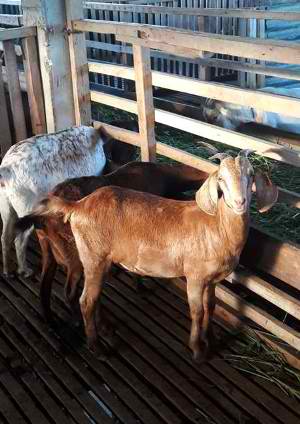 The product development was made possible with the support from the Commission of Higher Education (CHED), Department of Science and Technology-Philippine Council for Agriculture, Aquatic and Natural Resources Research and Development (DOST-PCAARRD), DOST-Industrial Technology Development Institute (DOST-ITDI), Bureau of Animal Industry-Animal Products Development Center (BAI-APDC).
The ISU collaborated with Agricomponent Co., a private company, to be the exclusive franchisee of Chevon Valley. Agricomponent served as the private-partner of ISU responsible in the manufacturing and distribution of products nationwide. All products undergo proximate analysis to make products ready for commercialization. ### (Ma. Eloisa H. Aquino)
Source: bar.gov.ph
The product development was made possible with the support from the Commission of Higher Education (CHED), Department of Science and Technology-Philippine Council for Agriculture, Aquatic and Natural Resources Research and Development (DOST-PCAARRD), DOST-Industrial Technology Development Institute (DOST-ITDI), Bureau of Animal Industry-Animal Products Development Center (BAI-APDC).
The ISU collaborated with Agricomponent Co., a private company, to be the exclusive franchisee of Chevon Valley. Agricomponent served as the private-partner of ISU responsible in the manufacturing and distribution of products nationwide. All products undergo proximate analysis to make products ready for commercialization. ### (Ma. Eloisa H. Aquino)
Source: bar.gov.ph


 Photo by
Photo by 
 Photo by kjetil_r[/caption]
Photo by kjetil_r[/caption]

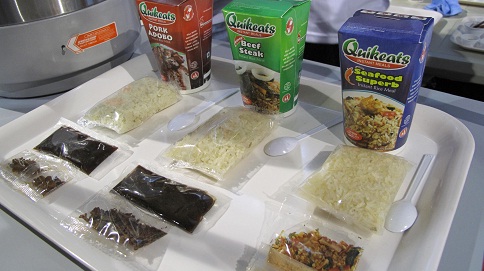 Manufactured by Five N and I Food Corporation under strict supervision of the Department of Science and Technology’s Food and Nutrition Research Institute (DOST-FNRI), Quikeats Instant Rice Meals are produced using FNRI’s dehydrated iron-fortified rice technology.
FNRI developed this iron-fortified rice technology to help address iron deficiency anemia (IDA) which is still prevalent among four out of 10 and three out of 10 pregnant and lactating women, respectively, according to DOST-FNRI’s Seventh National Nutrition Survey (7th NNS) in 2008.
IDA also affects two out of 10 children six months to five years old, as well as the six- to 12-year-olds. One out of ten 13- to 19-year-old teens are likewise affected by IDA, the survey results further revealed.
Fortifying rice with iron is a strategic nutrition intervention in helping address IDA because rice is the staple food of most Filipinos.
With this nutritional and marketing advantage, Quikeats initially unveiled the Pork Adobo Instant Rice Meal last year and eventually came-up this year with Pinoy Beef Steak and Seafood Superb variants as well.
Sporting slim and light-weight biodegradable boxes, the Quikeats Instant Meals are easily prepared by just adding hot water to rehydrate and warm the ingredients.
After ten minutes, the ingredients in pouches are mixed with the rehydrated and warm iron-fortified rice to give you your favorite instant meal on the go.
Instant Rice Meal Pork Adobo comes in a 75-gram single serving size box which packs 210 calories of energy, only 1.5 grams of total fat, 46 grams of total carbohydrates, 5 grams of total protein, 520 milligrams of sodium;
Six micrograms Retinol Equivalent (RE) of vitamin A or 1 percent of the recommended energy and nutrient intakes (RENI) for vitamin A, and 2 milligrams of iron, or 20 percent of the RENI for iron of a person 19 years old and above.
Aside from dehydrated iron-fortified rice, Instant Rice Meal Pork Adobo contains dehydrated meat, wheat protein, choice spices and condiments, modified starch, and vegetable oil.
Instant Rice Meal Pinoy Beef Steak also weighs a net 75 grams in a single serving size box which provides 220 calories of energy, 1.5 grams total fat, 46 grams total carbohydrates, 5 grams total protein, 630 milligrams sodium, 9 micrograms RE of vitamin A or 2 percent of the RENI for vitamin A, and 3 milligrams of iron, or 21 percent of the RENI for iron of a person 19 years old and above.
In addition to dehydrated iron-fortified rice, Instant Rice Meal Pinoy Beef Steak’s ingredients include dehydrated meat, wheat protein, choice spices, condiments and vegetable oil.
Instant Rice Meal Seafood Superb weighs a bit lighter at a net 60 grams single serving size box but provides comparable nutrients than the other variants at 220 calories of energy, 3 grams total fat, 47 grams total carbohydrates, 4 grams total protein, 550 milligrams sodium, 1 microgram RE of vitamin A, and 2 milligrams of iron, or 17 percent of the RENI for iron of a person 19 years old and above.
Similarly, Instant Rice Meal Seafood Superb uses dehydrated iron-fortified rice. Other ingredients include sesame oil, shrimp powder, dried seafood, dried vegetables, choice spices, condiments, and annatto powder as color enhancer.
Quikeats Instant Rice Meals are ideal for busy people who usually do not have time to prepare food or sneak out of the office or school to grab a bite to quickly satisfy that hunger in between deadlines. These are also perfect for people who travel a lot, health buffs and sports enthusiasts who go on camping, mountain climbing or any outdoor activity, and for those who simply want a quick meal to go.
Quikeats Instant Rice Meals are now available initially in selected convenience stores and supermarkets in Metro Manila, but the Five N and I Food Corporation plans to distribute to provincial outlets soon.
Suggested introductory retail price is P35.50, which is reasonable considering the nutritional value and convenient features of the product.
For inquiries on this technology, contact Dr. Mario V. Capanzana, FNRI Director, at telephone numbers: (02) 837-2934 and 839-1839 (direct lines); 837-3164 (telefax);
Manufactured by Five N and I Food Corporation under strict supervision of the Department of Science and Technology’s Food and Nutrition Research Institute (DOST-FNRI), Quikeats Instant Rice Meals are produced using FNRI’s dehydrated iron-fortified rice technology.
FNRI developed this iron-fortified rice technology to help address iron deficiency anemia (IDA) which is still prevalent among four out of 10 and three out of 10 pregnant and lactating women, respectively, according to DOST-FNRI’s Seventh National Nutrition Survey (7th NNS) in 2008.
IDA also affects two out of 10 children six months to five years old, as well as the six- to 12-year-olds. One out of ten 13- to 19-year-old teens are likewise affected by IDA, the survey results further revealed.
Fortifying rice with iron is a strategic nutrition intervention in helping address IDA because rice is the staple food of most Filipinos.
With this nutritional and marketing advantage, Quikeats initially unveiled the Pork Adobo Instant Rice Meal last year and eventually came-up this year with Pinoy Beef Steak and Seafood Superb variants as well.
Sporting slim and light-weight biodegradable boxes, the Quikeats Instant Meals are easily prepared by just adding hot water to rehydrate and warm the ingredients.
After ten minutes, the ingredients in pouches are mixed with the rehydrated and warm iron-fortified rice to give you your favorite instant meal on the go.
Instant Rice Meal Pork Adobo comes in a 75-gram single serving size box which packs 210 calories of energy, only 1.5 grams of total fat, 46 grams of total carbohydrates, 5 grams of total protein, 520 milligrams of sodium;
Six micrograms Retinol Equivalent (RE) of vitamin A or 1 percent of the recommended energy and nutrient intakes (RENI) for vitamin A, and 2 milligrams of iron, or 20 percent of the RENI for iron of a person 19 years old and above.
Aside from dehydrated iron-fortified rice, Instant Rice Meal Pork Adobo contains dehydrated meat, wheat protein, choice spices and condiments, modified starch, and vegetable oil.
Instant Rice Meal Pinoy Beef Steak also weighs a net 75 grams in a single serving size box which provides 220 calories of energy, 1.5 grams total fat, 46 grams total carbohydrates, 5 grams total protein, 630 milligrams sodium, 9 micrograms RE of vitamin A or 2 percent of the RENI for vitamin A, and 3 milligrams of iron, or 21 percent of the RENI for iron of a person 19 years old and above.
In addition to dehydrated iron-fortified rice, Instant Rice Meal Pinoy Beef Steak’s ingredients include dehydrated meat, wheat protein, choice spices, condiments and vegetable oil.
Instant Rice Meal Seafood Superb weighs a bit lighter at a net 60 grams single serving size box but provides comparable nutrients than the other variants at 220 calories of energy, 3 grams total fat, 47 grams total carbohydrates, 4 grams total protein, 550 milligrams sodium, 1 microgram RE of vitamin A, and 2 milligrams of iron, or 17 percent of the RENI for iron of a person 19 years old and above.
Similarly, Instant Rice Meal Seafood Superb uses dehydrated iron-fortified rice. Other ingredients include sesame oil, shrimp powder, dried seafood, dried vegetables, choice spices, condiments, and annatto powder as color enhancer.
Quikeats Instant Rice Meals are ideal for busy people who usually do not have time to prepare food or sneak out of the office or school to grab a bite to quickly satisfy that hunger in between deadlines. These are also perfect for people who travel a lot, health buffs and sports enthusiasts who go on camping, mountain climbing or any outdoor activity, and for those who simply want a quick meal to go.
Quikeats Instant Rice Meals are now available initially in selected convenience stores and supermarkets in Metro Manila, but the Five N and I Food Corporation plans to distribute to provincial outlets soon.
Suggested introductory retail price is P35.50, which is reasonable considering the nutritional value and convenient features of the product.
For inquiries on this technology, contact Dr. Mario V. Capanzana, FNRI Director, at telephone numbers: (02) 837-2934 and 839-1839 (direct lines); 837-3164 (telefax); 